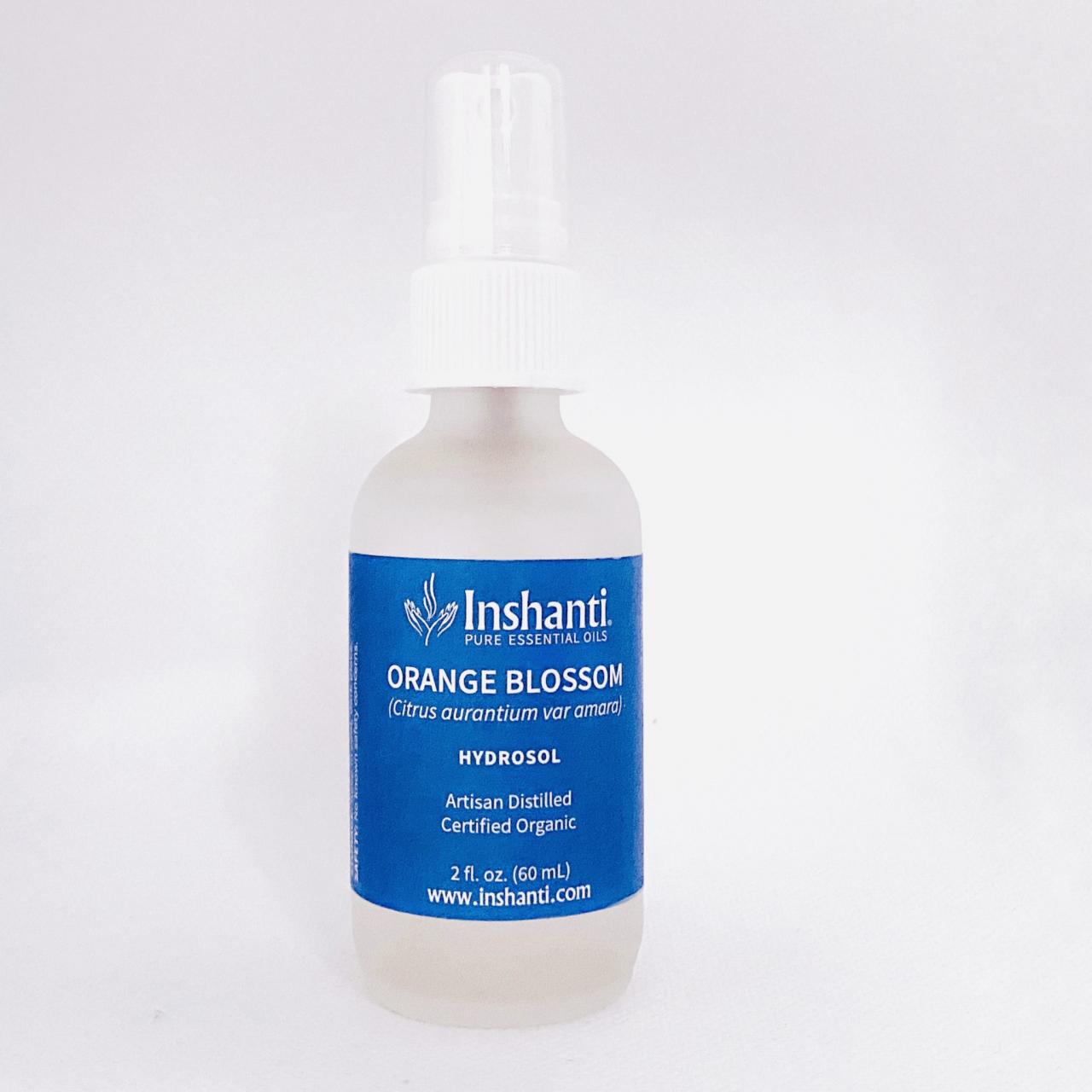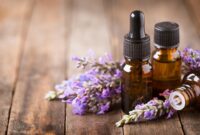Orange blossom essential oil, a fragrant treasure extracted from the delicate blooms of the orange tree, invites us on a journey of aromatic exploration. Its captivating scent and therapeutic properties have captivated hearts and minds for centuries, promising a transformative experience for body and soul.
From its botanical origins to its multifaceted applications, let’s delve into the world of orange blossom essential oil, uncovering its secrets and unlocking its potential for enhancing our lives.
Botanical Characteristics of Orange Blossom

Orange blossom, also known as Citrus aurantium, belongs to the Rutaceae family and is native to Southeast Asia. It is an evergreen shrub or small tree with a wide distribution in Mediterranean regions.
Physical Appearance
Orange blossom plants have glossy, dark green leaves that are ovate to lanceolate in shape. The flowers, which bloom in clusters during spring, are highly fragrant and feature five white petals with a central cluster of stamens. The fruit, known as oranges, is a round citrus fruit with a sweet, juicy pulp.
Chemical Composition
Orange blossom essential oil is extracted from the flowers of the orange blossom plant. It is a volatile oil with a sweet, floral scent. The chemical composition of orange blossom essential oil is complex, with over 200 identified compounds. The main constituents include:
| Compound | Percentage |
|---|---|
| Linalool | 30-50% |
| α-Pinene | 10-20% |
| Myrcene | 5-15% |
| Limonene | 5-10% |
| Geraniol | 2-5% |
Extraction and Production Methods

Orange blossom essential oil is extracted from the flowers of the bitter orange tree ( Citrus aurantium) using various methods. The choice of extraction method depends on factors such as the desired quality, yield, and cost.
Solvent Extraction
In solvent extraction, the orange blossoms are soaked in a solvent, typically hexane or ethanol, to dissolve the essential oil components. The mixture is then heated to evaporate the solvent, leaving behind the concentrated essential oil. This method is efficient and yields a high-quality oil, but it requires specialized equipment and can be expensive.
Steam Distillation
Steam distillation is a gentler method that involves passing steam through the orange blossoms. The steam carries the volatile essential oil components, which are then condensed and collected. This method produces a lighter, more delicate oil with a higher yield than solvent extraction, but it may require longer extraction times.
Cold Pressing
Cold pressing, also known as expression, is a mechanical method that involves crushing the orange blossoms to extract the essential oil. This method is less efficient than solvent extraction or steam distillation, but it preserves the delicate aroma and flavor compounds of the oil.
Factors Influencing Quality and Yield
The quality and yield of orange blossom essential oil are influenced by several factors, including:* Cultivation practices:The quality of the flowers, which depends on factors such as soil conditions, sunlight, and water availability, directly affects the quality of the essential oil.
Harvesting time
The flowers are typically harvested at the peak of their fragrance, which varies depending on the climate and region.
Extraction method
The choice of extraction method can significantly impact the quality and yield of the essential oil.
Storage conditions
Orange blossom essential oil is sensitive to light, heat, and oxygen, so proper storage conditions are crucial to preserve its quality and aroma.
Therapeutic Properties: Orange Blossom Essential Oil

Orange blossom essential oil possesses a wide range of therapeutic properties that have been recognized both traditionally and in modern aromatherapy and herbal medicine. Scientific evidence supports the efficacy of this oil in treating various physical and emotional ailments.
Traditional Uses
Traditionally, orange blossom essential oil has been used to promote relaxation, alleviate stress, and enhance sleep. It is also believed to have calming and sedative effects, making it beneficial for reducing anxiety and nervous tension.
Modern Uses
In modern aromatherapy, orange blossom essential oil is widely used for its calming and uplifting properties. It is often employed to create a relaxing and soothing atmosphere, promoting emotional well-being and reducing stress. Additionally, it is believed to have antimicrobial and antioxidant properties, making it beneficial for skin care and overall health.
Scientific Evidence
Scientific studies have demonstrated the therapeutic benefits of orange blossom essential oil. For instance, a study published in the journal “Complementary Therapies in Medicine” found that inhaling orange blossom essential oil significantly reduced anxiety levels and improved sleep quality in participants.
Another study, published in the journal “Phytotherapy Research,” showed that orange blossom essential oil exhibited antibacterial and antifungal activity against various microorganisms.
Therapeutic Applications
Orange blossom essential oil is commonly used to treat a range of conditions, including:
| Condition | Benefits |
|---|---|
| Anxiety | Reduces anxiety and nervous tension |
| Stress | Promotes relaxation and relieves stress |
| Sleep disorders | Improves sleep quality and reduces insomnia |
| Skin conditions | Antimicrobial and antioxidant properties beneficial for acne, eczema, and other skin ailments |
| Digestive issues | Antispasmodic and carminative properties alleviate nausea, indigestion, and bloating |
Safety and Precautions

Orange blossom essential oil is generally considered safe for topical and aromatic use. However, it is important to be aware of potential risks and side effects, and to use the oil safely and appropriately.
The most common side effect of orange blossom essential oil is skin irritation. The oil can cause redness, itching, and burning, especially if it is applied to sensitive skin. To avoid irritation, it is important to dilute the oil with a carrier oil, such as jojoba or almond oil, before applying it to the skin.
Oral Ingestion
Orange blossom essential oil is not safe for oral ingestion. Ingesting the oil can cause nausea, vomiting, and diarrhea. In rare cases, it can also cause more serious side effects, such as seizures and coma.
Pregnancy and Breastfeeding
Orange blossom essential oil should not be used during pregnancy or breastfeeding. The oil can cause uterine contractions, which can lead to miscarriage or premature birth. It can also pass into breast milk and be ingested by the baby.
Other Precautions
Orange blossom essential oil can interact with certain medications, such as blood thinners and antidepressants. It is important to talk to your doctor before using the oil if you are taking any medications.
The oil should also be avoided by people with a history of seizures or other neurological disorders.
Applications and Uses

Orange blossom essential oil is a versatile and fragrant oil with a wide range of applications in daily life. Its sweet, floral scent and therapeutic properties make it a popular choice for skincare, hair care, and home cleaning.
Here are some creative ways to incorporate orange blossom essential oil into your daily routine:
Skincare, Orange blossom essential oil
- Add a few drops to your moisturizer for a hydrating and calming effect.
- Create a facial toner by mixing a few drops with water or witch hazel.
- Use as a natural deodorant by applying a small amount to the underarms.
Hair Care
- Add a few drops to your shampoo or conditioner for a boost of shine and volume.
- Create a hair mask by mixing a few drops with coconut oil or olive oil.
- Use as a scalp treatment to soothe dry or itchy scalp.
Home Cleaning
- Add a few drops to your cleaning solutions for a fresh and uplifting scent.
- Create a natural air freshener by diffusing a few drops in your home.
li>Use as a disinfectant by mixing a few drops with water in a spray bottle.
Specific Products and Recipes
- Orange Blossom Body Butter: Combine shea butter, coconut oil, and orange blossom essential oil for a luxurious and moisturizing body butter.
- Orange Blossom Hair Rinse: Brew a cup of strong orange blossom tea and use it as a final hair rinse for added shine and softness.
- Orange Blossom Diffuser Blend: Combine orange blossom essential oil, lavender essential oil, and frankincense essential oil for a calming and uplifting diffuser blend.
Final Conclusion
As we bid farewell to our exploration of orange blossom essential oil, its legacy lingers, reminding us of the profound impact that nature’s gifts can have on our well-being. Its versatility, therapeutic benefits, and enchanting aroma make it a cherished companion for those seeking balance, tranquility, and a touch of floral magic in their daily lives.
FAQ Guide
What are the key therapeutic benefits of orange blossom essential oil?
Orange blossom essential oil is renowned for its calming and relaxing properties, promoting emotional balance and reducing stress. It also possesses anti-inflammatory and antimicrobial qualities, making it beneficial for skincare and respiratory health.
How can I safely use orange blossom essential oil?
For topical use, dilute orange blossom essential oil in a carrier oil, such as jojoba or almond oil, before applying it to the skin. For inhalation, add a few drops to a diffuser or humidifier. Always consult a healthcare professional before using essential oils, especially if you have any underlying health conditions.
What are some creative ways to incorporate orange blossom essential oil into my routine?
Add a few drops to your bathwater for a relaxing and aromatic soak. Create a calming room spray by mixing orange blossom essential oil with water and spritzing it around your home. Infuse your skincare products with a few drops of orange blossom essential oil for a boost of hydration and radiance.


